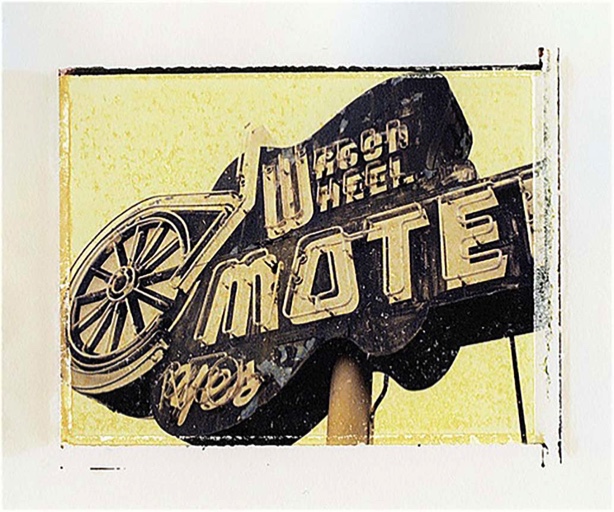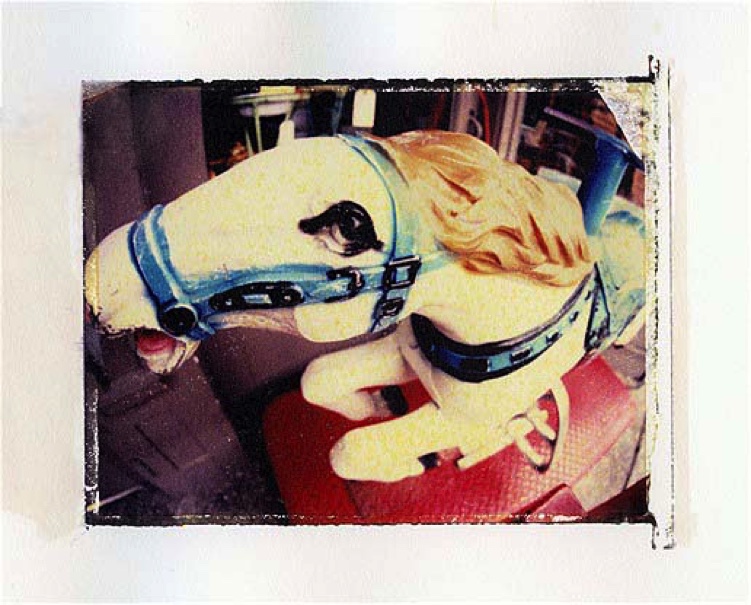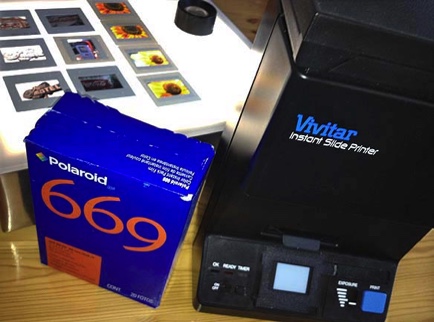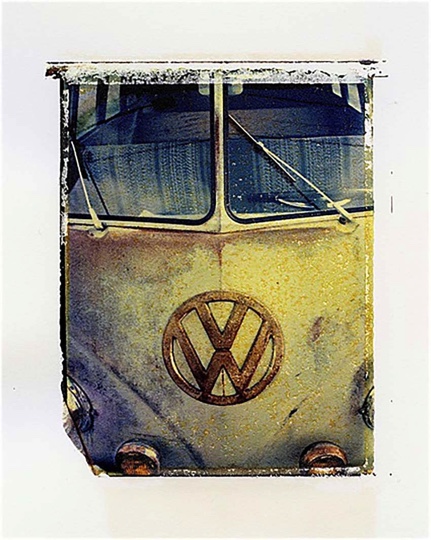


The first time I saw an image transfer I didn't know what it was. It was a hybrid: a photo that looked like a watercolor painting. I snooped around to find out more. This photo transfer and print making technique requires Polaroid or Fuji instant film, which is hard to find today. And art supplies. Prints are created by exposing instant film and letting it partially develop before peeling apart the positive and negative slides, and discarding the positive. The negative, or emulsion, is pressed on to watercolor paper or another receptor to finish developing. And you need a Polaroid camera that shoots Type 59 pack film, or slide printer (lower left) that transfers previously shot 35mm slides on to instant film. I used the latter, a Vivitar model that cost me $20 on eBay. Place a slide in the Vivitar, adjust the light and dark scale and hit the blue button. The slide is now transferred on to film. Turn off the lights, pull the film from the printer in a smooth motion. Wait 19 seconds then pull apart the two sides. Put the negative directly on the receiver material and roll with a hard brayer. Turn the lights on and then gently pull the negative from the paper.




